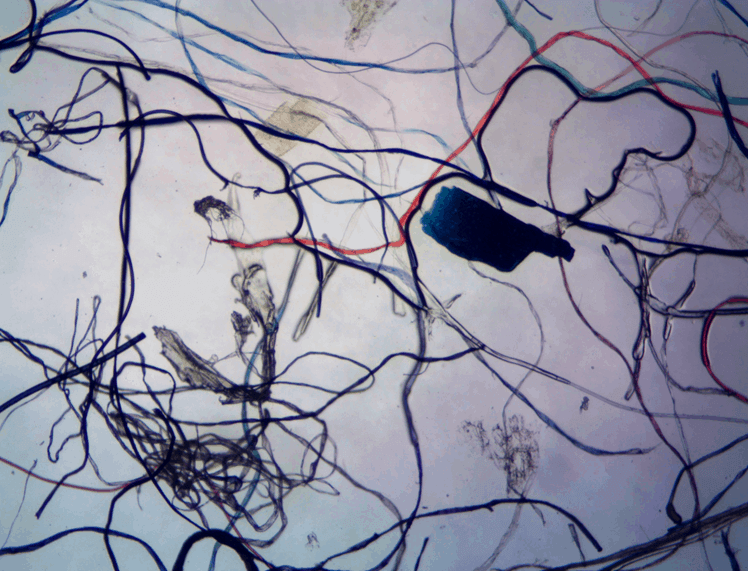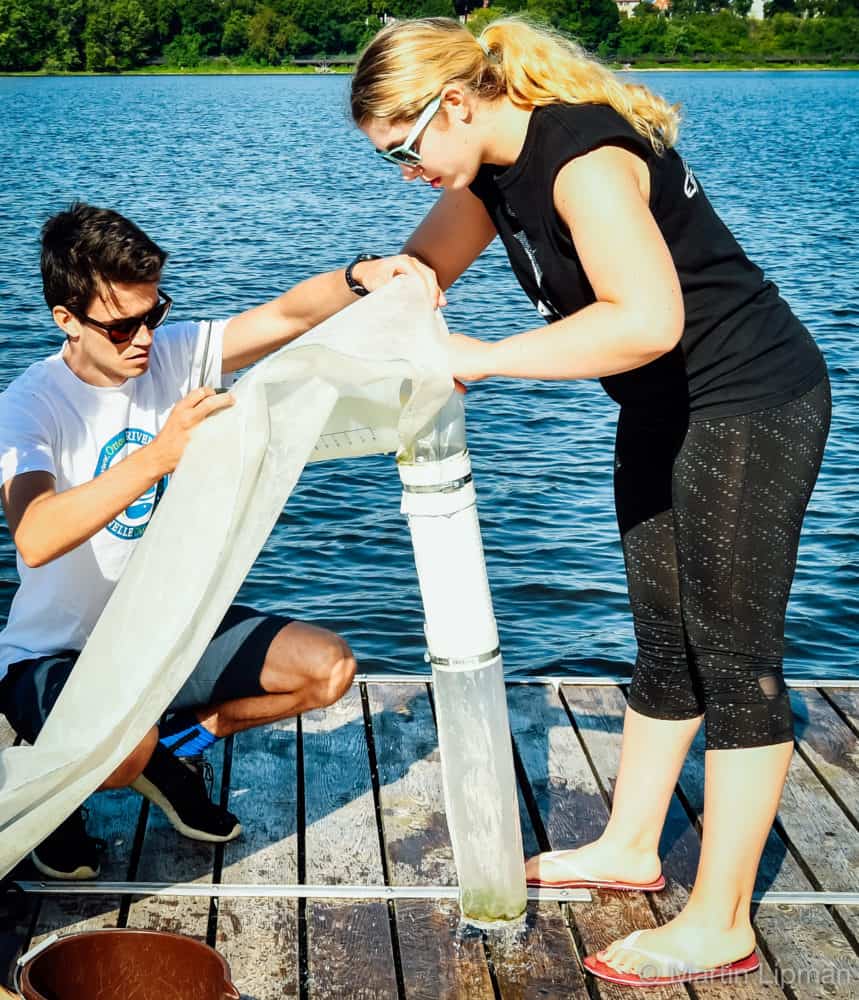Posted: December 19, 2023
How to deal with microfibres?

A new petition seeks to mandate filters on washing machines to prevent microfibres from entering our waterways. Microfibres are especially prevalent in the Ottawa River, as confirmed by research conducted by Ottawa Riverkeeper’s Riverwatcher volunteers.
Did you know that microfibres are the most common type of microplastic in the Ottawa River? These long thin threads of plastic mostly come from synthetic fabrics, such as polyesters. As these fabrics are used, worn, and most importantly washed, tiny fragments break off and can enter our waterways. Like other forms of microplastics, they do not biodegrade naturally and are therefore troublingly hard to get rid of.
Microplastics research
In 2016, Ottawa Riverkeeper’s Riverwatch Network of volunteers teamed up with the lab of Dr. Jesse Vermaire at Carleton University to study microplastics in the Ottawa River. The various studies, which ended in 2019, discovered new information about this increasingly worrying form of freshwater pollution. At the time, our volunteer network was the largest group of community scientists studying microplastics in freshwater in the world!

The initial study discovered that microplastics were found all along the Ottawa River, in every sample taken as part of the study. The most prevalent type of microplastic observed were microfibres, making up between 70% and 100% of the microplastic fragments found in each sample. The second most common form of plastic fragments were microbeads, which have since been banned thanks to legislation put in place as of July 1st, 2018.
The microfibre issue
Perhaps it is now time to tackle the issue of microfibres. Microfibres tend to be introduced through washing machines, as synthetic fabrics shed significant amounts of fibres during the washing process. These then enter the sewer system and are either sent to water treatment plants or dumped directly into waterways during combined sewer overflows.
Even if microfibre-containing water is sent to water treatment plants, and the plastics are filtered out of the water entering the river, it is suspected that the fibres often end up in sludge. Sludge is used in various forms of agriculture or other processes, providing a pathway for these microfibres to be re-introduced into the environment. From there, microplastics can re-enter waterways, despite having been initially captured by water treatment.
What to do?
A good way to stop microfibres from entering freshwater is to filter them out at the source. A new petition to the Federal Government is proposing to mandate the inclusion of filters on all new washing machines, and that tax credits be given to people to retrofit their existing machines with filters. Legislation like this would help reduce the amount of microfibres, and microplastics in general, in our waterways.
By signing on to this petition, you will encourage the federal government to find innovative tools to address one source of plastic pollution and help reduce the presence of microfibres in the Ottawa River, its tributaries, and other rivers throughout Canada.
You can sign the petition online here. The petition closes on December 29th, 2023.
< Previous post Next post >
Leave a Reply